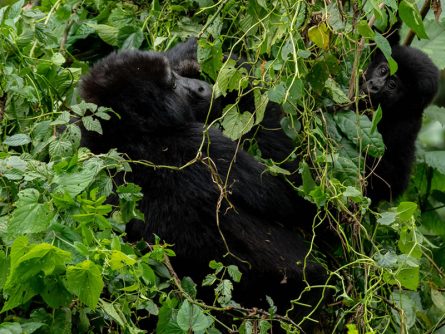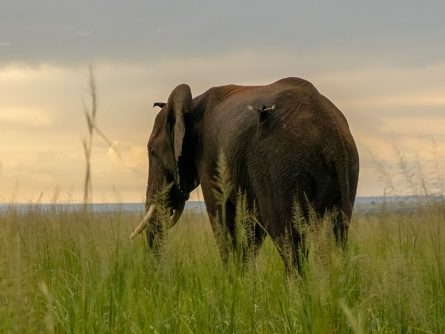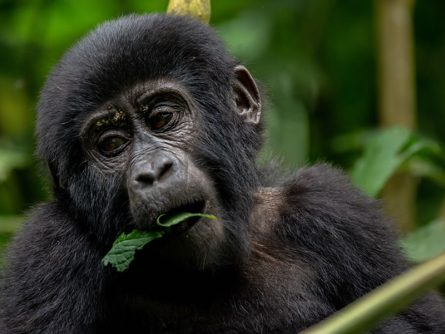Mgahinga National Park, located in the southwestern corner of Uganda, is a captivating destination offering a unique blend of natural beauty and cultural heritage.
Mgahinga National Park is part of the Virunga Mountain range, renowned for its volcanic peaks and lush montane forest. Spanning approximately 33,000 hectares, the park is the smallest in Uganda but is home to an array of wildlife, including the endangered mountain gorilla. It forms part of the Greater Virunga Landscape, which extends into Rwanda and the Democratic Republic of Congo.
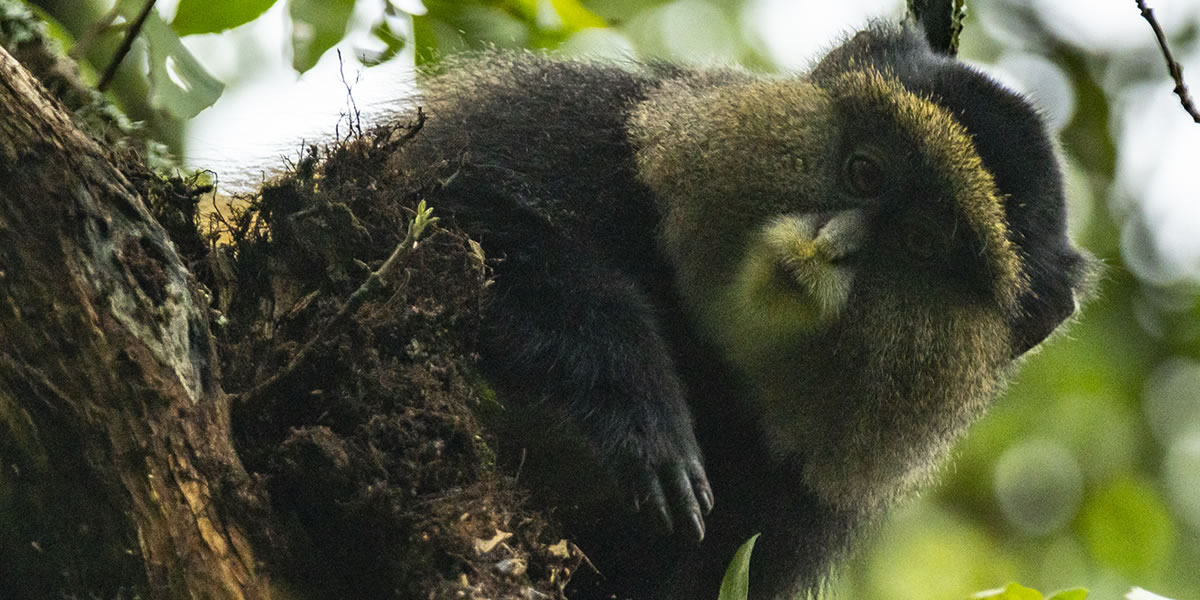
ACTIVITIES IN MGAHIGA NATIONAL PARK
- Gorilla Trekking in Mgahinga National Park
Gorilla trekking in Mgahinga National Park is an extraordinary adventure that allows visitors to encounter one of the world’s most endangered species, the mountain gorilla, in its natural habitat. Mgahinga, although Uganda’s smallest national park, is part of the larger Virunga Conservation Area, which is home to the Nyakagezi Gorilla Group. This activity is a once-in-a-lifetime experience, offering intimate encounters with these gentle giants amid the park’s mist-covered forests and rugged terrain.
The Trekking Experience in Mgahinga National Park
- Preparation:
Permits: Gorilla trekking requires a permit, which must be obtained in advance from the Uganda Wildlife Authority (UWA). Permits are limited to a small number of visitors per day to minimize the impact on the gorillas and enhance the quality of the experience.
What to Wear: Sturdy hiking boots, long-sleeved shirts, long trousers, and waterproof clothing are essential due to the challenging terrain and the likelihood of rain. Gloves are recommended for handling vegetation, and a hat and sunscreen for sun protection.
- The Trek:
Briefing: The day begins with a briefing at the park headquarters, where guides provide essential information on the trekking process, safety precautions, and gorilla behavior. The briefing is crucial to ensuring that the encounter is safe for both the visitors and the gorillas.
Tracking the Gorillas: Experienced guides and trackers lead visitors into the forest, following signs of the gorillas’ recent activity, such as broken bamboo, dung, and nests. The trek can take anywhere from 1 to 4 hours depending on the location of the gorillas, with the terrain ranging from relatively flat to steep and rugged.
Encounter: Once the gorillas are found, visitors have a magical hour to observe and photograph them at close quarters. This hour is filled with awe as you watch the gorillas go about their daily routines, from feeding and grooming to playful interactions and resting.
- Interaction:
Close Encounters: Observing gorillas in their natural habitat is an intimate experience. You may witness a range of behaviors, including the strong bond between the silverback and his family, the nurturing of young ones, and the social dynamics within the group.
Photography: While photography is encouraged, flash photography is prohibited as it can disturb the gorillas. The low light in the forest may require cameras with good low-light capabilities.
- Guidelines and Etiquette:
Maintaining Distance: Visitors are required to maintain a distance of at least 7 meters from the gorillas to prevent the transmission of diseases between humans and gorillas, who share about 98% of their DNA with humans.
Health Precautions: To further protect the gorillas, visitors showing symptoms of contagious diseases, such as the flu or a cold, may be barred from trekking. Additionally, smoking, eating, or drinking near the gorillas is not allowed.
Behavior: Silence or speaking in low tones is essential to avoid startling the gorillas. Following the guide’s instructions at all times ensures a safe and respectful interaction.
Gorilla trekking in Mgahinga National Park is an unforgettable experience that offers a deep connection with one of the world’s most magnificent creatures. The combination of challenging trekking, breathtaking landscapes, and the incredible opportunity to spend time with mountain gorillas makes it a highlight of any trip to Uganda. This activity not only provides a personal encounter with these endangered primates but also contributes to their ongoing conservation and the well-being of local communities.
Mgahinga is one of Uganda’s prime locations for gorilla trekking. The park is home to the Nyakagezi Gorilla Group, which is known for its diverse family structure and dynamic social interactions. Trekking to see these majestic creatures can be a transformative experience, offering a rare glimpse into their natural behavior in a dense forest environment.
- Golden Monkey Tracking in Mgahinga National Park
Golden monkey tracking is a unique wildlife experience offered in Mgahinga National Park, where visitors can observe the vibrant and endangered golden monkeys in their natural habitat. These monkeys are endemic to the Virunga volcanic region, which spans Uganda, Rwanda, and the Democratic Republic of Congo. With their striking golden-orange fur and lively behavior, these primates provide an exhilarating and memorable encounter.
About the Golden Monkeys in Mgahinga National Park
Species:The golden monkeys (Cercopithecus mitis kandti) are a subspecies of the blue monkey. They are known for their bright golden-yellow bodies, contrasting with darker limbs and faces. Their lively and social nature makes them fascinating to observe.
Habitat: Golden monkeys primarily inhabit the bamboo forests within Mgahinga National Park. These forests provide an abundant source of bamboo shoots, their favorite food, and offer a lush environment that is essential for their survival.
The Tracking Experience in Mgahinga National Park
- Preparation:
Permits: A permit is required to track golden monkeys in Mgahinga National Park. These permits can be purchased through the Uganda Wildlife Authority (UWA) and are usually less expensive than gorilla trekking permits, making it an accessible activity for many visitors.
What to Bring:It’s recommended to wear comfortable, long-sleeved clothing and sturdy hiking boots due to the often muddy and steep trails. A light rain jacket, insect repellent, and a camera with a zoom lens are also essential.
- The Trek:
Starting Point: The trek typically begins at the Ntebeko Visitor Center, where visitors receive a briefing from the park rangers about what to expect and the rules to follow during the activity.
The Journey: Guided by experienced rangers, visitors venture into the park’s bamboo forests in search of the golden monkeys. The trek can vary in length, often taking between 1 to 3 hours depending on the monkeys’ location. The trails wind through dense bamboo thickets, requiring a moderate level of fitness.
Tracking Process: The rangers use their knowledge of the monkeys’ habits and movement patterns to lead the group to the location of the golden monkeys. Along the way, you’ll have the chance to appreciate the park’s rich biodiversity, including various plant species and birdlife.
- Interaction:
Observation Time: Once the golden monkeys are found, visitors are allowed to spend approximately one hour observing them. This time offers a rare glimpse into their daily lives, including feeding, grooming, and social interactions.
Behavior: Golden monkeys are known for their playful and energetic behavior. You may see them leaping between bamboo stems, foraging for food, or engaging in social play. Their bright fur and active movements make them a joy to watch and photograph.
Photography: While the dense bamboo forest can present challenges for photography, the monkeys’ vibrant coloring and dynamic behavior provide excellent opportunities for capturing memorable shots. Flash photography is prohibited to avoid disturbing the animals.
- Guidelines and Etiquette:
Distance: Visitors are advised to maintain a distance of at least 7 meters from the monkeys to avoid disturbing them and to minimize the risk of disease transmission.
Quiet Observation: To ensure a respectful and undisturbed experience, visitors should remain quiet and avoid sudden movements. This helps to keep the monkeys comfortable and allows for a more natural observation.
No Feeding: Feeding the monkeys is strictly prohibited as it can disrupt their natural feeding patterns and behavior.
Golden monkey tracking in Mgahinga National Park offers a unique and rewarding wildlife experience, allowing visitors to connect with one of the region’s most colorful and charismatic primates. Whether you’re an avid wildlife enthusiast or simply looking for a special encounter with nature, this activity provides an opportunity to observe golden monkeys in their natural environment while contributing to their conservation and the well-being of local communities.
- Volcano Climbing in Mgahinga National Park
Mgahinga National Park, part of the Virunga Mountain Range, is home to three extinct volcanoes: Mount Muhabura, Mount Gahinga, and Mount Sabyinyo. Climbing these volcanoes is one of the most thrilling and adventurous activities in the park, offering breathtaking views, diverse vegetation zones, and the chance to stand at the meeting point of Uganda, Rwanda, and the Democratic Republic of Congo.
Volcanoes to Climb in Mgahinga National Park
- Mount Muhabura (4,127 meters)
Also known as "The Guide," Mount Muhabura is the highest of the three volcanoes in Mgahinga National Park. It is a challenging climb that rewards hikers with spectacular views of the Virunga range, Lake Edward, and even parts of Rwanda and the Democratic Republic of Congo.
Climbing Experience:
Difficulty: The climb is steep and strenuous, requiring a good level of fitness. It takes about 8 to 10 hours to complete the round trip.
Trail: The trail leads through various vegetation zones, starting with montane forest and progressing to heath and moorland. At the summit, hikers are greeted by a small crater lake.
Highlights:The summit offers panoramic views of the surrounding landscape, making the effort worthwhile for those who seek a rewarding challenge.
- Mount Gahinga (3,474 meters)
Named after the local word for a small pile of stones, Mount Gahinga is the smallest of the three volcanoes but still provides a rewarding hike. The mountain is characterized by its gentle slopes and a large swamp-filled crater at the top.
Climbing Experience:
Difficulty: The climb is moderate and takes about 6 hours to ascend and descend. It is less challenging than Mount Muhabura, making it suitable for hikers of varying fitness levels.
Trail: The trail passes through dense bamboo forests, home to golden monkeys, and transitions into alpine vegetation as you approach the summit.
Highlights: The swamp-filled crater at the top is a unique feature, and the surrounding views are equally impressive. The bamboo forests are also a highlight for nature enthusiasts.
- Mount Sabyinyo (3,669 meters)
Mount Sabyinyo, also known as "Old Man's Teeth" due to its rugged summit, is the most dramatic of the three volcanoes. The mountain’s peak marks the border point of Uganda, Rwanda, and the Democratic Republic of Congo.
Climbing Experience:
Difficulty: The climb is challenging and requires scrambling over steep ridges and ladders. The round trip takes about 8 hours.
Trail: The trail is rugged, with steep ascents and descents along narrow ridges. The final ascent involves climbing a series of ladders to reach the summit.
Highlights: Standing at the summit, you can be in three countries simultaneously. The view from the top is stunning, with a clear view of the other Virunga volcanoes and the surrounding landscapes.
Preparation for Volcano Climbing at Mgahinga National Park
Permits: While there is no specific permit required for climbing the volcanoes, you need to pay the park entry fees, which can be arranged through the Uganda Wildlife Authority (UWA).
Guides: Climbing the volcanoes requires a park ranger guide who will lead the way, provide information about the flora and fauna, and ensure your safety throughout the trek.
What to Bring: Essential gear includes sturdy hiking boots, layered clothing for varying temperatures, a rain jacket, gloves, a hat, and a walking stick. It’s also important to carry enough water and energy snacks.
What to Expect at volcano climbing in Mgahinga National Park
- Diverse Vegetation Zones:
The climb takes you through different vegetation zones, from lush montane forests and bamboo groves to heath and moorland, each offering its own unique scenery and wildlife.
- Wildlife Encounters:
While on the trail, you may encounter various wildlife, including golden monkeys, duikers, and a variety of bird species. The forested areas are particularly rich in biodiversity.
- Breathtaking Views:
The higher you climb, the more spectacular the views become. On a clear day, you can see far into the neighboring countries and take in the full beauty of the Virunga range.
Best Time for Volcano Climbing in Mgahinga National Park
Dry Seasons:The best times to climb the volcanoes are during the dry seasons, from June to August and December to February, when the trails are less muddy and the weather is more stable.
Weather Considerations: Even during the dry season, the weather can be unpredictable, with sudden rain showers and cooler temperatures at higher altitudes, so it’s important to be well-prepared.
Fitness Level and Safety:
- Pysical Fitness:
Volcano climbing in Mgahinga requires a good level of physical fitness, especially for Mount Muhabura and Mount Sabyinyo, which involve steep and challenging terrain. It’s recommended to undertake some preparatory hikes before attempting these climbs.
- Safety:
Always follow the instructions of your guide, stick to the designated trails, and be mindful of the altitude, which can cause fatigue and breathlessness.
Volcano climbing in Mgahinga National Park offers an unparalleled adventure for those seeking both a physical challenge and a deep connection with nature. Whether you choose the steep ascent of Mount Muhabura, the gentle slopes of Mount Gahinga, or the rugged ridges of Mount Sabyinyo, each volcano promises a unique and rewarding experience. The combination of diverse landscapes, rich biodiversity, and stunning views makes volcano climbing an essential activity for visitors to Mgahinga National Park.
- Bird Watching in Mgahinga National Park
Bird watching in Mgahinga National Park is a captivating experience, offering bird enthusiasts the chance to explore one of Uganda’s most biodiverse habitats. The park, nestled within the Virunga Mountain Range, is home to over 180 bird species, including several Albertine Rift endemics that are rarely seen elsewhere. The diverse ecosystems, ranging from montane forests to bamboo groves and alpine moorlands, provide a rich environment for birdlife, making Mgahinga a must-visit destination for bird watchers.
Key Bird Species in Mgahinga National Park
- Albertine Rift Endemics:
Rwenzori Turaco (Gallirex johnstoni):With its striking green and crimson plumage, the Rwenzori Turaco is one of the most sought-after birds in the park. It is often seen in the montane forests.
Kivu Ground Thrush (Zoothera tanganjicae): This elusive thrush is known for its melodious song and is best spotted in the dense undergrowth.
Shelley’s Crimsonwing (Cryptospiza shelleyi): A rare and endangered species, Shelley’s Crimsonwing can occasionally be spotted in the higher altitude zones of the park.
Dwarf Honeyguide (Indicator pumilio):Another endemic species, this small bird is known for its unique symbiotic relationship with honeybees.
- Other Notable Species:
Cinnamon Bracken Warbler (Bradypterus cinnamomeus): This warbler, with its distinctive song, is commonly found in the park’s underbrush.
Ruwenzori Batis (Batis diops): A small, active bird often seen flitting through the montane forest canopy.
Blue-headed Sunbird (Cyanomitra alinae):Known for its iridescent blue head, this sunbird is frequently seen in the park’s flowering trees.
Western Green Tinkerbird (Pogoniulus coryphaeus): A tiny bird with a powerful call, often heard before it’s seen.
Bird Watching Trails in Mgahinga National Park
- Gorge Trail:
The Gorge Trail is one of the best trails for bird watching in Mgahinga. It winds through dense montane forests, offering excellent opportunities to spot both forest birds and Albertine Rift endemics.Along this trail, you can expect to see species like the Rwenzori Turaco, Dusky Crimsonwing, and various warblers. The trail’s elevation changes provide access to different bird habitats.
- Bamboo Trail:
The Bamboo Trail traverses the park’s extensive bamboo forest, a unique habitat that supports a variety of bird species.
This trail is ideal for spotting golden monkeys as well as bird species like the Yellow-eyed Black Flycatcher and the Dwarf Honeyguide. The bamboo attracts several insectivorous birds.
- Muhabura Ridge:
For the more adventurous bird watcher, the ascent of Mount Muhabura offers the chance to observe high-altitude bird species and enjoy panoramic views.
At higher elevations, look out for species such as the Ruwenzori Double-collared Sunbird and the Alpine Chat.
Best Time for Bird Watching in Mgahinga National Park
Dry Seasons:The best time for bird watching in Mgahinga is during the dry seasons from June to August and December to February. During these periods, the trails are easier to navigate, and birds are more active, especially in the mornings.
Migratory Seasons: Between March and May, the park also sees an influx of migratory birds, adding to the diversity of species available for observation.
Guided Bird Watching
- Park Guides:
Hiring a knowledgeable guide from the Uganda Wildlife Authority (UWA) is highly recommended. These guides are familiar with the bird species, their calls, and the best spots to find them.
- Community Guides:
Local community guides also offer bird-watching tours. Their deep knowledge of the area and its wildlife, combined with traditional insights, can enrich your bird-watching experience.
Bird watching in Mgahinga National Park is a rewarding experience, offering a glimpse into the rich avian diversity of the Albertine Rift. Whether you’re a seasoned birder or a casual nature lover, the park’s varied habitats and rare bird species make it an ideal destination for bird watching. The opportunity to see endemic species in their natural environment, combined with the stunning landscapes of the Virunga Mountains, ensures that your bird-watching adventure in Mgahinga will be both fulfilling and unforgettable.
- Nature Walks in Mgahinga National Park
Nature walks in Mgahinga National Park offer a serene and immersive way to explore the park’s diverse ecosystems, from dense montane forests to bamboo groves and open moorlands. These walks allow visitors to connect deeply with nature, observe unique wildlife, and appreciate the stunning landscapes of the Virunga Mountains at a leisurely pace. Whether you are interested in botany, bird watching, or simply enjoying the peaceful surroundings, a nature walk in Mgahinga is an enriching experience.
Popular Nature Walks in Mgahinga National Park
- The Batwa Trail:
The Batwa Trail is more than just a walk; it’s a cultural journey that takes you through the forest and into the lives of the Batwa people, the original inhabitants of the forest. Led by Batwa guides, this trail provides insights into their traditional way of life, including hunting techniques, gathering medicinal plants, and using the forest for shelter.
Along the trail, visitors can explore ancient caves, listen to traditional Batwa songs and stories, and learn about the deep connection the Batwa have with the forest. The highlight is the Garama Cave, a sacred site where the Batwa used to perform rituals. The trail emphasizes the importance of conserving the Batwa culture while protecting the forest. It also provides an opportunity for visitors to contribute to the well-being of the Batwa community, as part of the tour fees go directly to them.
- The Sabinyo Gorge Trail:
The Sabinyo Gorge Trail is a beautiful nature walk that takes you deep into the heart of Mgahinga’s montane forest. The trail follows a stream through a lush gorge, offering opportunities to spot various bird species and primates.
The trail is known for its rich birdlife, including the Rwenzori Turaco and other Albertine Rift endemics. Hikers might also encounter golden monkeys, which are native to this region. The walk culminates in a stunning view of the Sabinyo Gorge, a deep, forested valley that cuts through the park.The Sabinyo Gorge Trail is moderately challenging, with some steep sections. It typically takes about 3 to 4 hours to complete.
- The Border Trail:
The Border Trail is an intriguing walk that takes you along the international border between Uganda and Rwanda, offering a unique perspective on the Virunga landscape. This trail loops around Mount Gahinga and provides stunning views of the three volcanoes: Sabinyo, Gahinga, and Muhabura.
Along the trail, you’ll pass through different vegetation zones, including bamboo forests, where you might spot golden monkeys. The trail also offers panoramic views of the surrounding countryside, with opportunities to see local communities and farmland across the border. The Border Trail is relatively easy, making it suitable for most visitors. It takes about 5 hours to complete the loop, depending on your pace and interest in the flora and fauna.
Flora and Fauna
Vegetation Zones: The nature walks in Mgahinga take you through various vegetation zones, including montane forests, bamboo groves, and moorlands. Each zone has its unique plant species, from towering trees and colorful wildflowers to dense bamboo thickets.
Wildlife: While on a nature walk, you might encounter several of the park’s residents, including primates like golden monkeys and baboons, as well as smaller mammals like duikers. Birdlife is abundant, with opportunities to spot Albertine Rift endemics and other forest birds. The walks also offer a chance to observe various reptiles, insects, and amphibians that thrive in this rich ecosystem.
Nature walks in Mgahinga National Park offer a peaceful and educational way to experience the beauty and biodiversity of this unique region. Whether you’re exploring the cultural heritage of the Batwa people, enjoying bird watching in the Sabinyo Gorge, or taking in the views along the Border Trail, each walk provides a different perspective on the park’s natural and cultural treasures. These walks are perfect for anyone looking to connect with nature at a slower pace, making them a highlight of any visit to Mgahinga National Park.
- Cultural Encounters in Mgahinga National Park
Cultural encounters in Mgahinga National Park offer visitors the unique opportunity to immerse themselves in the rich cultural heritage of the Batwa people, one of Africa’s oldest indigenous communities. Known as the "Keepers of the Forest," the Batwa lived in the forests of southwestern Uganda for thousands of years before the establishment of national parks. These encounters provide a rare and intimate glimpse into the Batwa’s traditional way of life, their deep connection with the forest, and their enduring cultural practices.
The Batwa Cultural Experience in Mgahinga National Park
- The Batwa Trail:
The Batwa Trail is the center piece of cultural encounters in Mgahinga National Park. This guided walk is led by Batwa guides who share their knowledge of the forest and its resources. The trail offers visitors a chance to learn about the Batwa’s ancient traditions, including their hunting and gathering techniques, medicinal plant use, and spiritual beliefs.
Cultural Insights: Along the trail, Batwa guides demonstrate traditional skills such as making fire using sticks, setting up animal traps, and building shelters from natural materials. Visitors also learn about the plants used for food, medicine, and ceremonial purposes. The guides share stories passed down through generations, giving a personal and historical context to the Batwa way of life.
Garama Cave: The highlight of the Batwa Trail is the visit to Garama Cave, a sacred site where the Batwa once held important ceremonies and meetings. Inside the cave, visitors are treated to traditional Batwa songs and dances, performed by the Batwa themselves. The haunting melodies echoing through the cave create a powerful and emotional experience, reflecting the Batwa’s deep spiritual connection to the forest.
- Batwa Community Visits:
Beyond the Batwa Trail, visitors can also arrange visits to Batwa communities living near the park. These visits offer a deeper understanding of how the Batwa have adapted to life outside the forest and the challenges they face today.
Community Engagement: During a community visit, you can interact with Batwa families, learn about their current lifestyle, and see firsthand the efforts being made to preserve their culture and improve their living conditions. The Batwa are eager to share their stories, and these interactions often lead to meaningful exchanges between visitors and the community.
- Traditional Batwa Music and Dance:
Traditional music and dance are integral to Batwa culture. Performances often take place during the Batwa Trail or community visits, where visitors can enjoy lively dances, rhythmic drumming, and songs that tell stories of the Batwa’s history and spiritual beliefs.
Participation: Visitors are often invited to join in the dancing and singing, making it a fun and interactive experience. This cultural expression is a way for the Batwa to keep their traditions alive and share them with the outside world.
Cultural Significance and Conservation in Mgahinga National Park
- Preserving Batwa Heritage:
The cultural encounters in Mgahinga are not just about tourism; they are part of a broader effort to preserve the Batwa’s cultural heritage. The Batwa Trail and other initiatives help to keep their traditions alive, while also educating visitors about the importance of respecting and protecting indigenous cultures.
- Supporting the Batwa Community:
The fees collected from these cultural activities directly benefit the Batwa community. The income helps fund community projects, educational programs, and healthcare, improving the quality of life for the Batwa people while ensuring that they remain connected to their cultural roots.
What to Bring for cultural Encounters in Mgahinga National Park
Respectful Attire: When participating in cultural encounters, it’s important to dress modestly and respectfully, in line with local customs.
Gifts and Donations: While not required, bringing small gifts such as school supplies or making a donation to the community is appreciated and can make a positive impact.
Cultural encounters in Mgahinga National Park provide a unique and enriching experience that goes beyond wildlife and landscapes, offering a deep connection to the human history and cultural richness of the region. The Batwa Trail and community visits allow visitors to engage with the Batwa people, learn about their ancient traditions, and gain a profound understanding of the challenges faced by indigenous communities. These encounters are a reminder of the importance of preserving both cultural and natural heritage, making them an unforgettable part of any visit to Mgahinga National Park.
ACCOMMODATION IN MGAHINGA NATIONAL PARK
Mgahinga National Park offers a range of accommodation options that cater to different tastes and budgets, ensuring that visitors can enjoy a comfortable and memorable stay while exploring the park's unique attractions. Whether you're looking for a luxury lodge with stunning views of the Virunga volcanoes, a mid-range option with modern amenities, or a budget-friendly campsite, Mgahinga has something to suit every traveler.
- Luxury Lodges
- Mount Gahinga Lodge
Mount Gahinga Lodge is the premier luxury accommodation in Mgahinga National Park. Nestled at the foot of the Virunga Mountains, the lodge offers a tranquil and intimate setting with breathtaking views of the surrounding landscapes.
The lodge features a collection of spacious cottages, each designed to blend harmoniously with the natural environment. The bandas are elegantly furnished with comfortable beds, en-suite bathrooms, and private verandas that offer stunning views of the volcanoes.
Guests at Mount Gahinga Lodge can enjoy a range of high-end amenities, including a cozy lounge with a fireplace, a well-stocked bar, and a restaurant serving delicious meals made from locally sourced ingredients. The lodge also offers a massage service, ideal for relaxing after a day of trekking.
In addition to its prime location for gorilla and golden monkey trekking, the lodge offers cultural experiences, such as visits to the Batwa community and guided nature walks.
- Mid-Range Lodges and Camps
- Lake Chahafi Resort
Lake Chahafi Resort is a mid-range option located near Mgahinga National Park. This eco-friendly resort offers a peaceful retreat by the picturesque Lake Chahafi, with easy access to the park's activities.
The resort offers comfortable cottages with modern amenities, including en-suite bathrooms and private balconies overlooking the lake.
Guests can enjoy the restaurant, which serves both local and international cuisine, as well as a bar and lounge area. The resort also offers guided bird watching tours around the lake.
In addition to being close to the park, Lake Chahafi Resort offers activities like canoeing on the lake, bird watching, and community visits.
- Inkoro Hotel
It’s a mid-range accommodation option located in the Kisoro area, close to Mgahinga National Park. It offers comfortable rooms equipped with modern amenities, making it a convenient and affordable choice for travelers exploring the park. The hotel provides a restaurant serving local and international cuisine, and its proximity to the park allows guests to easily participate in activities such as gorilla tracking, golden monkey tracking, and hiking the Virunga Volcanoes. The friendly staff and serene environment add to the overall experience, making it a good option for those looking for a mid-range stay near Mgahinga.
- Budget lodges in Mgahinga National Park
- Traveler’s Rest Hotel
Located in Kisoro town, just a short drive from Mgahinga National Park, Traveler’s Rest Hotel is a budget option with a rich history. The hotel was a favorite of Dian Fossey, the famous primatologist, and offers a cozy and welcoming atmosphere. The hotel has a range of comfortable rooms, each equipped with en-suite bathrooms and basic amenities. The decor reflects the colonial style, with touches of African art. The hotel features a restaurant serving a mix of African and European cuisine, a bar, and a garden where guests can relax after a day of exploration.
- Mgahinga Community Campground
ALocated near the park entrance, this campground offers affordable accommodation in basic tents and bandas. The camp provides a true wilderness experience, with opportunities to engage with the local community. It’s an excellent option for budget travelers seeking a rustic stay close to nature.
- Muhabura Motel
Situated in Kisoro town, Muhabura Motel offers simple and affordable rooms with basic amenities. The motel has a restaurant, a bar, and a garden, making it a convenient and budget-friendly option for those planning to visit Mgahinga National Park.
Mgahinga National Park offers a diverse range of accommodation options that cater to different budgets and preferences. Whether you're looking for luxury, mid-range comfort, or a budget-friendly stay, you’ll find a place that suits your needs while providing easy access to the park’s incredible activities. Each accommodation option provides a unique experience, from the luxury of Mount Gahinga Lodge to the community-focused Amajambere Iwacu Community Camp, ensuring that your stay in Mgahinga is both comfortable and memorable.
Mgahinga National Park offers a unique and rewarding experience for those seeking adventure, wildlife encounters, and cultural immersion. Whether trekking through the misty forests to see mountain gorillas or climbing the dramatic volcanic peaks, visitors will find that Mgahinga provides a memorable and enriching experience in Uganda’s southwestern highlands.
Getting to Mgahinga National Park
Getting to Mgahinga National Park involves several options depending on your starting point. Here's a detailed guide on how to reach the park:
From Kampala/Entebbe
- By Road:
Via Mbarara-Kabale-Kisoro Route: The journey from Kampala to Mgahinga National Park is about 510 kilometers and can take approximately 9-10 hours. The route takes you through Mbarara, Kabale, and then Kisoro town, which is the nearest town to the park. From Kisoro, it's about a 14-kilometer drive to the park's entrance. The road is mostly paved until Kabale, after which it becomes more rugged, especially the stretch from Kabale to Kisoro.
Via Masaka-Mbarara-Kabale Route: This is an alternative road route that also takes you through Masaka, Mbarara, and Kabale before reaching Kisoro. The road conditions are similar to the previous route, and this option also takes around 9-10 hours.
- By Air:
Charter Flights: You can take a domestic charter flight from Entebbe International Airport or Kajjansi Airstrip to Kisoro Airstrip. The flight takes about 1 hour and offers stunning aerial views of Uganda's landscapes. From Kisoro Airstrip, it’s a short drive (approximately 14 kilometers) to Mgahinga National Park. Several local airlines operate charter flights, such as Aerolink Uganda and Fly Uganda.
Scheduled Flights: Some domestic airlines offer scheduled flights to Kisoro Airstrip, particularly during the high tourism season. It’s advisable to check availability and book in advance.
From Other Locations in Uganda
- From Bwindi Impenetrable National Park:
If you're coming from Bwindi, particularly from the Rushaga or Nkuringo sectors, the drive to Mgahinga is relatively short, taking about 1-2 hours depending on your starting point. The roads are generally rugged, but the journey offers scenic views of the surrounding forests and mountains.
- From Queen Elizabeth National Park:
- If traveling from Queen Elizabeth National Park, the drive to Mgahinga National Park takes about 5-6 hours. The most common route passes through Kabale and then on to Kisoro. The roads can be challenging, particularly during the rainy season, so a 4x4 vehicle is recommended.
From Rwanda
- By Road:
Via Cyanika Border: If you're coming from Rwanda, the most direct route is through the Cyanika border post, which is near Kisoro town. From Kigali, it’s about a 3-4 hour drive to the border, and then a short drive to Mgahinga National Park. The roads are generally good, and this is a popular route for travelers combining visits to Volcanoes National Park in Rwanda and Mgahinga in Uganda.
Transportation Tips
- 4x4 Vehicle: Given the rough terrain, especially in the Kisoro region and within the park, it’s advisable to use a 4x4 vehicle.
- Hiring a Driver/Guide: If you prefer not to drive yourself, you can hire a driver or guide from Kampala, Kisoro, or even Entebbe. This option allows you to relax and enjoy the scenery without worrying about navigation.
No matter which route or mode of transport you choose, the journey to Mgahinga National Park is filled with scenic landscapes, making it an adventure in itself.

